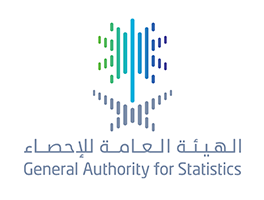01-06-2017
أولاً: توصيات لرفع كفاءة الأجهزة الإحصائية: 1. تعزيز قدرات المراكز الإحصائية والهيئات الوطنية ورفع كفاءة العاملين فيها. 2. تحسين وتطوير أداء الأجهزة الإحصائية الوطنية من خلال: أ- تبني مفاهيم جديدة لقياس الأداء تواكب التطورات الاقتصادية والاجتماعية في دول المنطقة. ب- الشراكة الداخلية بين مختلف الإدارات في الأجهزة الإحصائية للتكامل في إنتاج بيانات ذات موثوقية وشمولية. ت- تطوير قنوات الحصول على تغذية راجعة حول المنتجات من قبل مختلف أطياف المجتمع 3. تفعيل مشاريع الربط الإلكتروني بين الإدارات الإحصائية في الأجهزة الحكومية (بصفتها جهات مُنتجة للبيانات) والأجهزة الإحصائية الرسمية. 4. حث الأجهزة الإحصائية على تطوير برامج نقل المعرفة وتبادل الخبرات فيما بينها من جهة، وبين الوحدات الإحصائية في الأجهزة الحكومية من جهة أخرى. ثانيًا: توصيات لرفع كفاءة المنتجات الإحصائية: 1. إجراء تحليل للوضع الراهن خصوصًا للمؤشرات الجديدة وتحديد الآليات المناسبة لتوفير هذه البيانات. 2. تطوير المنتجات الإحصائية من حيث التعاريف والمفاهيم والمحتوى وطريقة العرض ووسائل الوصول للمنتجات والتركيز على الجانب التفاعلي في التطبيقات الإلكترونية 3. العمل على رفع جودة البيانات وشموليتها ونشرها في أوقاتها المحددة للاستفادة منها وتعظيم دورها التنموي. 4. العمل على سد الثغرات في البيانات المطلوبة وتوفير كافة المتطلبات الإحصائية على المستوى الوطني والإقليمي والدولي 5. العمل على ضمان اتساق المؤشرات الوطنية مع المؤشرات العالمية. 6. العمل على تقديم التحليلات الإحصائية لمتخذي القرار كنماذج للتحليل المعمق الذي يساعد على اتخاذ القرار ورسم السياسات. 7. رفع مستوى نشر وتوفير البيانات التفصيلية للمسوح عبر كافة القنوات الرقمية المتاحة. 8. استخدام البيانات الجيومكانية في ربط البيانات السكانية بمكان الإقامة بهدف توفير بيانات أكثر دقة في مختلف المجالات التنموية. 9. العمل على توفير البيانات في مختلف القطاعات وخاصة غير المالية لفهم الصورة الكاملة للاقتصاد. 10. منح البيانات الضخمة مزيدا من الاهتمام من خلال: أ- إدراج المواضيع المتعلقة بالبيانات الضخمة في الاستراتيجيات الإحصائية الوطنية. ب- رفع مستوى التعاون مع المنظمات الدولية في مجال البيانات الضخمة والالتزام بالمعايير الدولية. ت- العمل على إيجاد أطر تشريعية وقانونية للتعامل مع البيانات الضخمة ث- دراسة المواضيع المهمة التي تتوفر من خلال البيانات الضخمة وأخذ الدور القيادي لنشر وتحليل هذه البيانات. ج- بناء الشراكات بين الأجهزة الإحصائية والقطاع الخاص للاستفادة من البيانات الضخمة ثالثاً: توصيات متابعة مؤشرات التنمية المستدامة: 1. تشكيل فرق عمل وطنية وإقليمية تعمل على متابعة التقدم المحرز في مجال إنتاج مؤشرات التنمية المستدامة. 2. إعطاء أهداف التنمية المستدامة الخاصة بالبيئة أهمية عالية وإدراجها في كافة الأعمال الإحصائية للأجهزة الإحصائية. رابعًا: توصيات تفعيل استخدام التقنية في العمل الإحصائي: 1. متابعة التقدم المضطرد في التقنية للاستفادة في جمع ومعالجة ونشر وتحليل البيانات الإحصائية. 2. الاستفادة من الإمكانات الضخمة لشركات الاتصالات سواء في جمع البيانات أو حفظها عبر الحوسبة السحابية. 3. توظيف الأساليب غير التقليدية في جمع ونشر الإحصاء من منظور المستخدمين للإحصاءات في ضوء وجود ثورة بيانات وتطور وسائل التواصل الاجتماعي. 4. العمل على إنشاء السجل السكاني الذي يسهم في ربط البيانات السكانية والمسكان مع البيانات التعلمية والصحية والاقتصادية من خلال الاستفادة من الأدوات والبرامج التقنية الحديثة وقواعد البيانات في الوزارات المختلفة. خامسًا: توصيات رفع الوعي الإحصائي: 1. العمل المشترك بين المراكز الإحصائية الوطنية والمركز الإحصائي الخليجي لإدراج المعرفة الإحصائية كعنصر مهم في الخطط الاستراتيجية ومشاريع العمل المستقبلية. 2. العمل على بناء شراكات استراتيجية بين المراكز الإحصائية ومختلف الجهات ذات العلاقة (القطاع الأكاديمي، القطاع الإعلامي، القطاع الخاص) لتعزيز المعرفة الإحصائية. 3. تصميم برامج تدريبية متخصصة في الوعي الإحصائي 4. بناء مؤشرات لقياس المعرفة الإحصائية تشمل جميع القطاعات وتتجاوب مع المستوى التعليمي والمهني للمستخدمين. 5. تحويل البيانات التي يتم إنتاجها في الأجهزة الإحصائية إلى قوالب بصرية فنية تخاطب كافة شرائح المجتمع. 6. تطوير أساليب نشر البيانات واستخدام الاتجاهات الحديثة في صناعة المحتوى وتقديمه. سادساً: توصيات رفع كفاءة القطاع الإحصائي: 1. التنسيق على المستوى الوطني بين الجهاز الإحصائي والجهات الأخرى للتعامل مع البيانات الضخمة لضمان المصداقية والتحقق من جودة البيانات 2. إعداد دراسة لإنشاء مجالس استشارية بمشاركة جميع فئات المستخدمين للمنتجات الإحصائية الرسمية حسب القطاعات الإحصائية. 3. العمل على زيادة الارتباط بين الجامعات والمؤسسات البحثية والأكاديمية وبين الأجهزة الإحصائية الوطنية. 4. إجراء حوار بين صانعي السياسات والباحثين وطالبي البيانات لفهم أكبر بشأن الأولويات ونوع البيانات. سابعاً: توصيات تطوير العمل الإحصائي الخليجي: 1. العمل على تطوير آليات التشاركية بين الأجهزة الإحصائية الوطنية والمركز الإحصائي الخليجي لضمان اتساق الخطط الاستراتيجية ومشاريع العمل المستقبلية بين دول الخليج. 2. رفع مستوى التعاون بين الأجهزة الوطنية الإحصائية لتأهيل وتدريب الكوادر الوطنية في المجال الإحصائي والتقني. 3. العمل على تطوير مؤشرات لقياس العمل الخليجي المشترك. 4. متابعة الأجهزة الإحصائية الوطنية في تطوير استخدام السجلات الإدارية ومواكبة المعايير الدولية في هذا الإطار.
